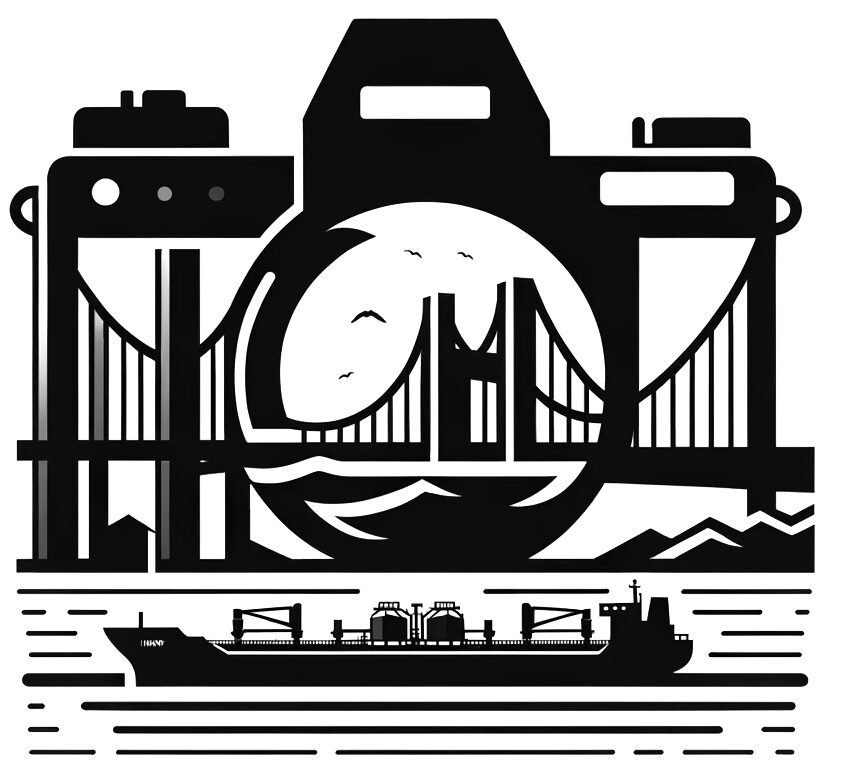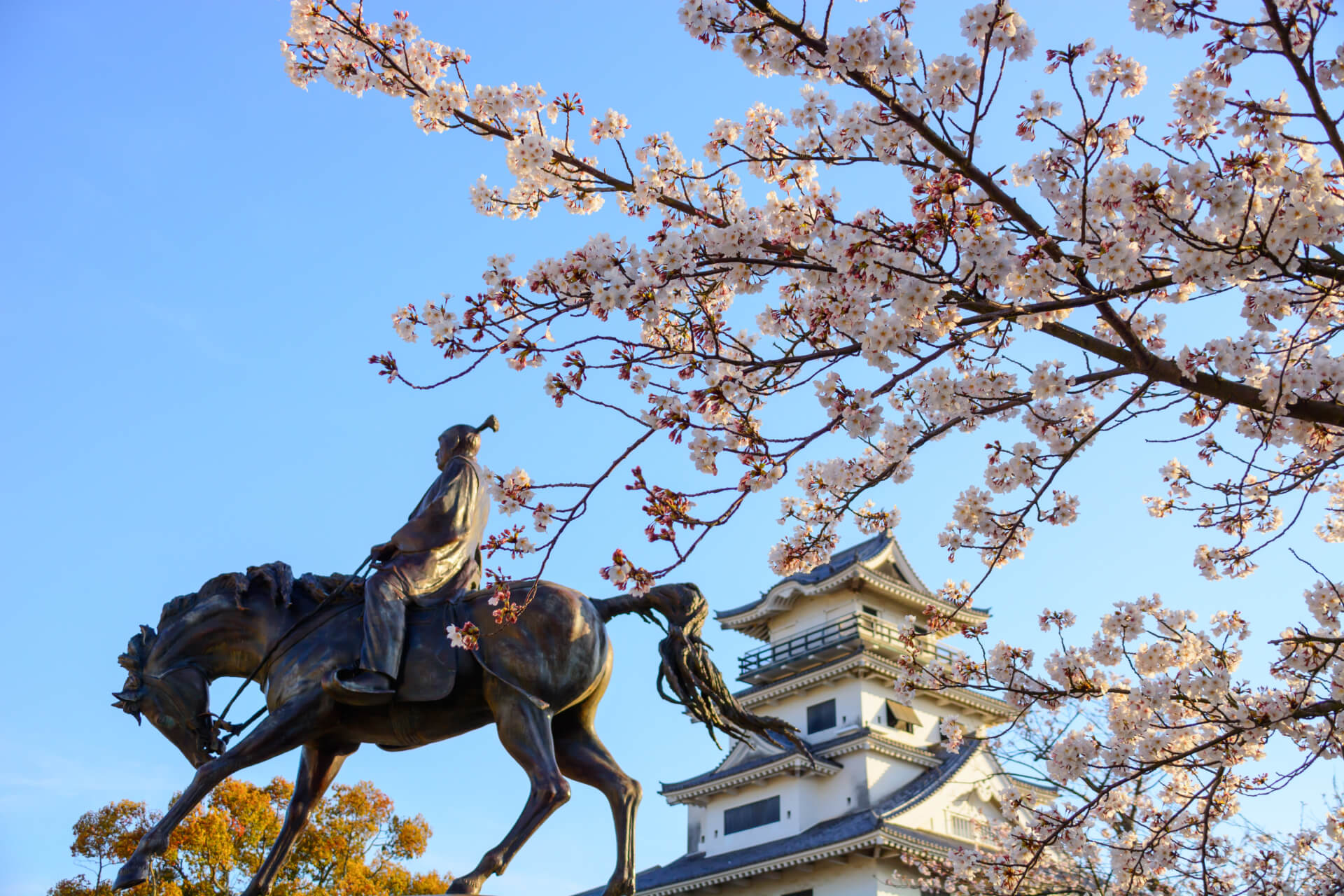Cherry Blossom Viewing at Imabari-jō CastleOverlooking the Seto Inland Sea
Imabari-jō Castle (今治城, Imabari-jō) and its surroundings are renowned for their cherry blossom beauty in spring, offering an exceptional experience for those visiting during the sakura season. The prime viewing period for cherry blossoms at Imabari Castle typically spans from late March to early April. During this time, visitors are treated to the luxurious sight of splendid cherry blossoms alongside the majestic castle tower, making it an ideal spot for hanami, the traditional Japanese practice of cherry blossom viewing.
The fusion of the cherry blossoms’ beauty with the grandeur of the vast castle renders Imabari Castle a cherished spot, heralding the arrival of spring and beloved by locals.
Within the castle grounds, Fukiage Park is especially recommended for hanami. During the peak bloom, families and groups of friends can be seen spreading out mats and leisurely enjoying the spring warmth under the cherry trees. Some visitors prefer to sit on benches, savoring a bento (Japanese lunch box) against the backdrop of Imabari Castle, creating a picturesque and memorable experience.
This spot remains relatively uncrowded even on sunny holidays, allowing for a peaceful appreciation of the cherry blossoms and the castle’s beauty. It’s truly a hidden gem.
Moreover, the castle illuminated at night creates a magical atmosphere, offering visitors the chance to enjoy a romantic view of Imabari with the night sakura. The convenience of nearby stores allows for the indulgence of enjoying a quiet drink under the serene night sakura—a luxurious experience by any measure.
About Imabari Castle
Imabari Castle, constructed by the master castle builder Todo Takatora, stands as one of Japan’s distinguished castles. Located in Imabari City, Ehime Prefecture, this castle is celebrated as a Mizujiro (water castle), or Kaijo (sea castle), and is recognized as one of the most exquisite examples of Japanese castle architecture.
Construction of Imabari Castle began in 1604 and was completed in 1620, under the lordship of Todo Takatora. According to some accounts, its construction was initiated on the orders of Toyotomi Hideyoshi. Situated facing the Seto Inland Sea in Shikoku, the castle’s beauty, as well as its strategic location, were highly valued.
A distinctive feature of Imabari Castle is its beautiful water-filled moats and seaside location. The castle complex, consisting of the Honmaru (main circle of defense), Ninomaru (second circle), and Sannomaru (third circle), each had independent defensive capabilities. Notably, the castle’s architecture features seawater moats, a unique defense system that varied with the tide, earning it the nickname “sea castle” and marking it as a rare type of fortress in Japan.
Throughout history, Imabari Castle was not significantly involved in battles but played an active role during the final years of the Tokugawa shogunate. Following the Meiji Restoration, parts of the castle were demolished or converted into a park. However, the main keep, some gates, and other structures still remain today, designated as Important Cultural Properties.
Today, Imabari Castle draws many tourists with its beautiful scenery and historical significance. The castle houses a history museum,
offering exhibits and activities such as stamp rallies for visitors to enjoy, providing insights into the life and culture of the time.
Positioned with a magnificent view over the Seto Inland Sea, the view from the castle encompasses the breathtaking landscape of the Seto Inland Sea, including the Kurushima Kaikyo Bridge on the Shimanami Kaido. Celebrated for its picturesque scenery, Imabari Castle is counted among the top three water castles in Japan and is also selected as one of Japan’s 100 Famous Castles.
The castle, illuminated at night in warm colors, emerges three-dimensionally against the night sky, creating a fantastical scene as the keep and stone walls reflect on the surface of the moat. This illumination can be enjoyed daily from 30 minutes after sunset until 10 p.m.
Particularly, the area around the statue of Todo Takatora and the sakura-lined path in front of the “Tetsu no Mon” (Iron Gate) serve as popular photo spots for visitors, making Imabari Castle a cherished destination for those seeking to experience the blend of historical grandeur and natural beauty.
Access and Surrounding Information
- Location: 3-1-3 Torimachi, Imabari City, Ehime Prefecture
- Parking: Available (3 spaces for large vehicles – reservation required; 54 spaces for standard vehicles; 1 space for disabled parking)
- Admission Fees:
- Adults: 520 yen
- Students: 260 yen
- High school students and younger or those under 18: Free
- Seniors (65 and over): 420 yen
- Contact Number: 0898-31-9233
(Imabari City Cultural Promotion Division) - Website: https://www.city.imabari.ehime.jp/museum/imabarijo/

